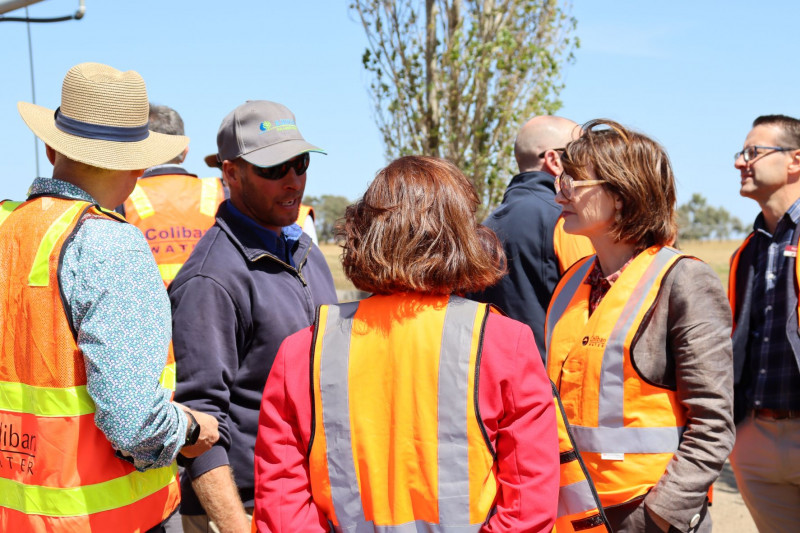
Angela Crawford
Work on an irrigation pipeline designed to divert treated wastewater from the Kyneton Water Reclamation Plant to irrigators is now complete.
Known as the Kyneton Recycled Water Irrigation project, the 14-kilometre pipeline network will pump up to 300 megalitres of recycled water to farmland to reduce the risk of the plant discharging excess wastewater to the Campaspe River.
A 60-hectare farm at Barfold, Crofton Park, is the first – and so far only – property to sign on for Class C recycled water for irrigation.
The project was part of a commitment made in 2021 by Coliban Water to upgrade the Kyneton Water Reclamation Plant, after the water authority was convicted and fined for discharging treated wastewater from the plant to the river in breach of its EPA licence.
At the time, CW managing director Damian Wells acknowledged the breaches and apologised for the impacts they had on downstream landowners and the environment.
“In response to the operational shortcomings at the water reclamation plant, we have fast tracked a $17 million investment to upgrade the plant with the Kyneton Solutions Project,” Mr Wells then said.
Politicians and stakeholders were given a tour of the new irrigation pipeline earlier this month and congratulated the project partners on its completion.
“The completion of the final stage of works is an important milestone signalling change for the Kyneton community and the Campaspe River,” local MP Mary-Anne Thomas said.
Not all were so complimentary however, with some landowners describing the effort as merely a “short-term solution”.
Karen Hayman, one of the team leaders of ‘Keep Kyneton Country’ under the umbrella of the Macedon Ranges Sustainability Group, said the money would have been better invested in upgrading the treatment plant so it could process on demand high-quality water that was appropriate to go into our waterways.
“The Campaspe River will still be used as a drain when these lagoons are full in times of heavy rainfall,” Ms Hayman said.
“Irrigation is not required when rainfall is heavy like last winter.
“$38M would have ensured the best outcomes but instead $20M spent on a pipeline that after two years only one landholder has been found to have the ability to invest in (for the required) irrigation infrastructure and the Campaspe River continues to be poisoned.”
Greenhill landowner Huntly Barton agreed.
“I have done the maths on the cost of taking on this water and in my situation it’s not viable,” he said.
“To be viable we would need longer, hotter summers, and as we have said on numerous occasions our soil types around here are heavy clays so require little water before there is run off.
“What CW forgets is that farming land along the river is in small holdings and we do not have the capacity to invest in such projects,” he said.






